Ford Ranger vs Hyundai i10 - Differences and prices compared
Costs and Efficiency:
Price and efficiency are often the first things buyers look at. Here it becomes clear which model has the long-term edge – whether at the pump, the plug, or in purchase price.
Hyundai i10 has a clearly advantage in terms of price – it starts at 14600 £, while the Ford Ranger costs 37500 £. That’s a price difference of around 22963 £.
Fuel consumption also shows a difference: Ford Ranger manages with 3.10 L and is therefore convincingly more efficient than the Hyundai i10 with 4.90 L. The difference is about 1.80 L per 100 km.
Engine and Performance:
Power, torque and acceleration say a lot about how a car feels on the road. This is where you see which model delivers more driving dynamics.
When it comes to engine power, the Ford Ranger has a decisively edge – offering 292 HP compared to 90 HP. That’s roughly 202 HP more horsepower.
In acceleration from 0 to 100 km/h, the Ford Ranger is significantly quicker – completing the sprint in 7.90 s, while the Hyundai i10 takes 11.40 s. That’s about 3.50 s faster.
In terms of top speed, the Ford Ranger performs slight better – reaching 190 km/h, while the Hyundai i10 tops out at 175 km/h. The difference is around 15 km/h.
There’s also a difference in torque: Ford Ranger pulls convincingly stronger with 697 Nm compared to 172 Nm. That’s about 525 Nm difference.
Space and Everyday Use:
Cabin size, boot volume and payload all play a role in everyday practicality. Here, comfort and flexibility make the difference.
Seats: offers more seating capacity – vs .
In curb weight, Hyundai i10 is decisively lighter – 996 kg compared to 2082 kg. The difference is around 1086 kg.
When it comes to payload, Ford Ranger decisively takes the win – 1108 kg compared to 423 kg. That’s a difference of about 685 kg.
Who wins the race?
The Ford Ranger proves to be leaves the rival little chance and therefore becomes our DriveDuel Champion!
Ford Ranger is the better all-rounder in this comparison.
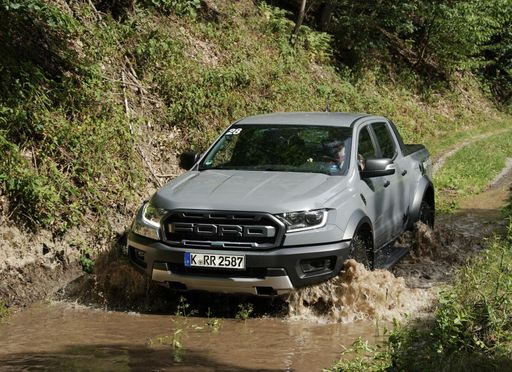 @ Ford Motor Company / Ford Media Center
@ Ford Motor Company / Ford Media Center
Ford Ranger
Costs and Consumption
View detailed analysis
Engine and Performance
View detailed analysis
Dimensions and Body
View detailed analysis
Ford Ranger
The Ford Ranger is a workhorse with the manners of a grown-up pickup—practical, tough, and surprisingly civilized on the road. It’s the sort of truck that laughs at mud on the weekend and performs like a sensible daily driver during the week, making it an easy sell for buyers who want capability without theatrics.
details @ Ford Motor Company / Ford Media Center
@ Ford Motor Company / Ford Media Center
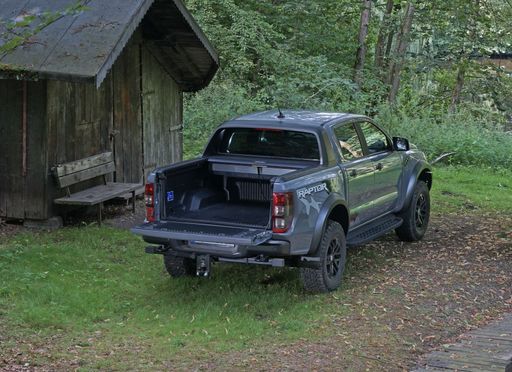 @ Ford Motor Company / Ford Media Center
@ Ford Motor Company / Ford Media Center
Hyundai i10
The Hyundai i10 is a cheeky city car that squeezes big-car confidence into a pocket-friendly package, carving through tight streets with surprising composure and sensible practicality. For buyers after low fuss, sensible equipment and wallet-friendly running costs, it's a smart, no-nonsense pick that makes sense whether you're a first-time driver or need a reliable second car.
details @ Hyundai Motor Company
@ Hyundai Motor Company
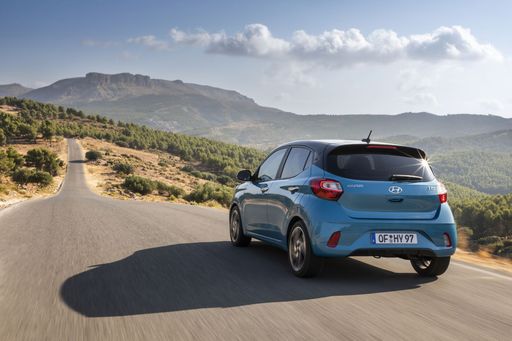 @ Hyundai Motor Company
@ Hyundai Motor Company
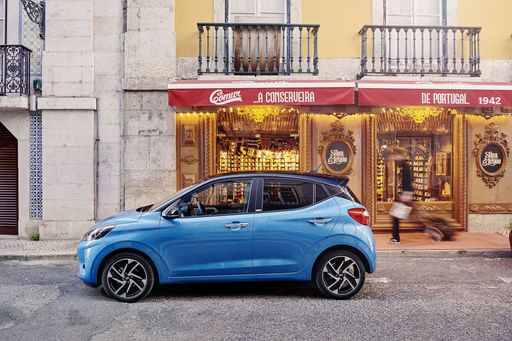 @ Hyundai Motor Company
@ Hyundai Motor Company
 @ Hyundai Motor Company
@ Hyundai Motor Company
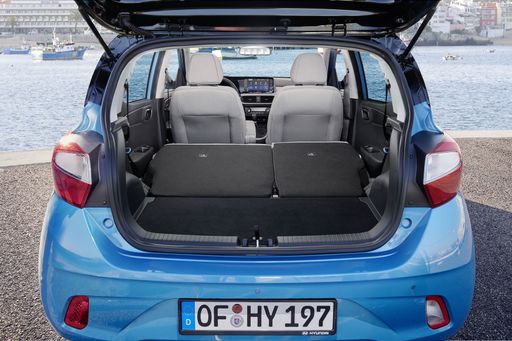 @ Hyundai Motor Company
@ Hyundai Motor Company
 @ Ford Motor Company / Ford Media Center
@ Ford Motor Company / Ford Media Center
|
 @ Hyundai Motor Company
@ Hyundai Motor Company
|
|
|
|
Costs and Consumption |
|
|---|---|
|
Price
37500 - 71900 £
|
Price
14600 - 19000 £
|
|
Consumption L/100km
3.1 - 13.8 L
|
Consumption L/100km
4.9 - 5.5 L
|
|
Consumption kWh/100km
-
|
Consumption kWh/100km
-
|
|
Electric Range
42 km
|
Electric Range
-
|
|
Battery Capacity
11.80 kWh
|
Battery Capacity
-
|
|
co2
70 - 315 g/km
|
co2
110 - 124 g/km
|
|
Fuel tank capacity
80 L
|
Fuel tank capacity
36 L
|
Dimensions and Body |
|
|---|---|
|
Body Type
Pickup
|
Body Type
Hatchback
|
|
Seats
2 - 5
|
Seats
4 - 5
|
|
Doors
2 - 4
|
Doors
5
|
|
Curb weight
2082 - 2511 kg
|
Curb weight
996 - 1099 kg
|
|
Trunk capacity
-
|
Trunk capacity
252 L
|
|
Length
5370 - 5420 mm
|
Length
3670 - 3675 mm
|
|
Width
1918 - 1968 mm
|
Width
1680 mm
|
|
Height
1868 - 1922 mm
|
Height
1480 - 1483 mm
|
|
Max trunk capacity
-
|
Max trunk capacity
1050 L
|
|
Payload
676 - 1108 kg
|
Payload
344 - 423 kg
|
Engine and Performance |
|
|---|---|
|
Engine Type
Diesel, Petrol, Plugin Hybrid
|
Engine Type
Petrol
|
|
Transmission
Manuel, Automatic
|
Transmission
Manuel, Automatic
|
|
Transmission Detail
Manual Gearbox, Automatic Gearbox
|
Transmission Detail
Manual Gearbox, Automated Manual
|
|
Drive Type
All-Wheel Drive
|
Drive Type
Front-Wheel Drive
|
|
Power HP
170 - 292 HP
|
Power HP
63 - 90 HP
|
|
Acceleration 0-100km/h
7.9 - 12.1 s
|
Acceleration 0-100km/h
11.4 - 18.4 s
|
|
Max Speed
180 - 190 km/h
|
Max Speed
143 - 175 km/h
|
|
Torque
405 - 697 Nm
|
Torque
93 - 172 Nm
|
|
Number of Cylinders
4 - 6
|
Number of Cylinders
3 - 4
|
|
Power kW
125 - 215 kW
|
Power kW
46 - 66 kW
|
|
Engine capacity
1996 - 2993 cm3
|
Engine capacity
998 - 1197 cm3
|
General |
|
|---|---|
|
Model Year
2022 - 2025
|
Model Year
2024
|
|
CO2 Efficiency Class
G, B
|
CO2 Efficiency Class
C, D
|
|
Brand
Ford
|
Brand
Hyundai
|
What drive types are available for the Ford Ranger?
The Ford Ranger is offered with All-Wheel Drive.
The prices and data displayed are estimates based on German list prices and may vary by country. This information is not legally binding.
